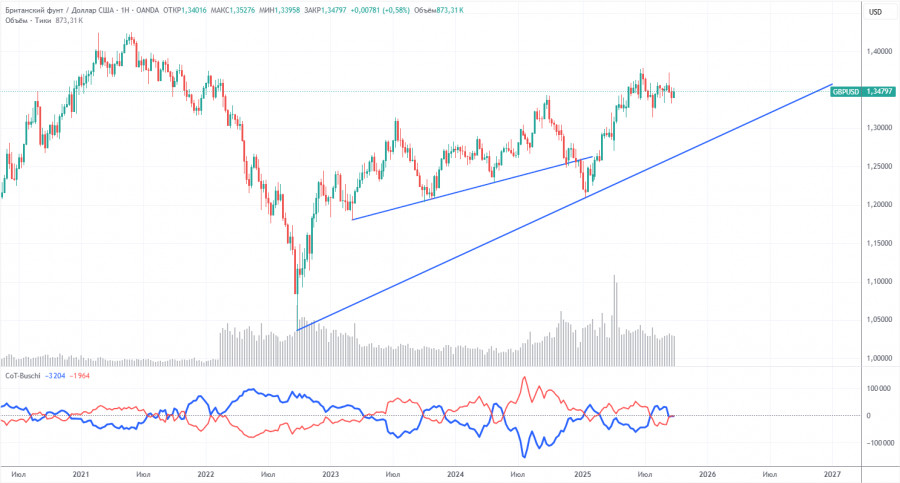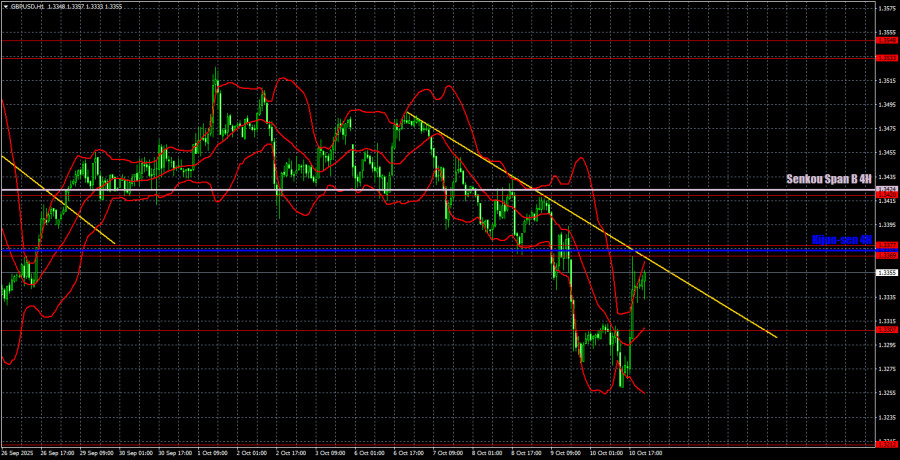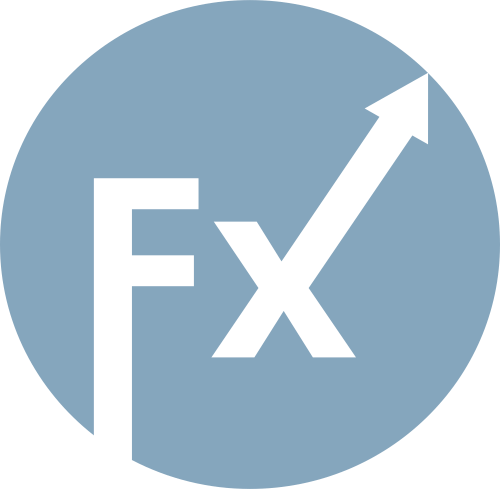

The GBP/USD currency pair also traded with gains on Friday, which seemed somewhat contradictory given the macroeconomic background, though it was perfectly in line with the broader context. The global fundamental backdrop remains sharply negative for the U.S. dollar, making any dollar strength appear as nothing more than a technical correction. On the daily timeframe (where the core correction unfolds), corrections lasting several weeks or even months are absolutely standard. On the hourly chart, such a correction or sideways movement often appears as a series of alternating trends.
From a technical standpoint, the downtrend remains intact. The price continues to move below the trendline and below the Ichimoku indicator lines. Therefore, the corrective movement may persist for a while longer. Over the past two weeks, the market has ignored several bearish dollar drivers, but can it ignore a new escalation in Trump's trade war with China? Perhaps we'll have an answer by Monday or Tuesday. If the upward movement continues, the trendline will break, and both major currency pairs (EUR/USD and GBP/USD) will begin pointing upward.
On the 5-minute chart, four trading signals were generated on Friday. Initially, the pair bounced twice from the 1.3307 level but managed to decline by only about 30 pips. This short setup didn't bring a loss, but likely didn't generate notable profit either.
During the U.S. session, a buy signal formed near the same 1.3307 level, and the price surged rapidly, so only quick traders could catch that entry. Nevertheless, the designated target area of 1.3369–1.3377 was reached.
A bounce from this resistance zone allowed short positions to be considered, but this last signal came too late in the session to trade.

COT reports for the British pound show that the sentiment of commercial traders has been constantly shifting in recent years. The red and blue lines, representing the net positions of commercial and non-commercial traders, cross frequently and generally remain near the zero line. Currently, they are practically aligned—indicating a nearly equal number of long and short positions.
The dollar continues to weaken due to Donald Trump's policy actions, which diminish the relevance of asset manager demand for the pound in the short term. The trade war, in one form or another, is expected to persist over the long term. The Fed is widely expected to lower interest rates during the coming year, contributing to continued downward pressure on the dollar.
According to the latest COT report on the pound, the "Non-commercial" group opened 3,700 long contracts and closed 900 short contracts—resulting in a net increase of 4,600 contracts.
In 2025, the pound experienced strong growth, mainly due to Trump's political agenda. When that driver fades, the dollar could regain ground—but no one knows when that could happen. The rate of net position growth or decline for the pound isn't particularly important on its own. Dollar positioning remains more impactful and is declining at a faster pace.

On the hourly timeframe, GBP/USD is still forming a downward trend. This continues to contradict the overall market logic. The dollar still lacks strong fundamental support, so we continue to expect the bullish trend of 2025 to resume sooner or later. For now, traders should wait for a break above the trendline and ideally also the Kijun-sen line.
For October 13, we identify the following key trading levels:
1.3125, 1.3212, 1.3307, 1.3369–1.3377, 1.3420, 1.3533–1.3548, 1.3584, 1.3681, 1.3763, 1.3833, 1.3886. The Ichimoku indicator lines—Senkou Span B (1.3424) and Kijun-sen (1.3374)—may also serve as signal levels. Stop Loss should be moved to breakeven when the price moves 20 pips in the correct direction. Ichimoku lines can shift during the day and must be monitored when identifying signals.
No significant economic events are scheduled for either the U.S. or the UK on Monday. As a result, flat price action and low volatility may dominate throughout the day. However, traders should not forget Trump's new tariffs, which markets might not have had time to fully price in on Friday.
Today, traders can operate from the 1.3369–1.3377 area and from the critical Ichimoku line. Rebounds from these levels would confirm that a correction is ongoing and present opportunities to open short positions targeting 1.3307.
Long positions should only be considered above the Senkou Span B line, as the zone from 1.3369 to 1.3430 contains multiple layers of resistance.

SZYBKIE LINKI